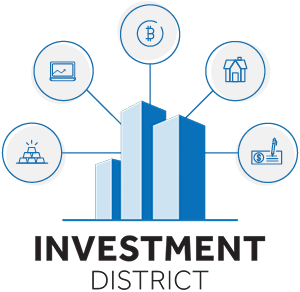Although the Federal Reserve’s normal target for inflation is 2 percent, one in three institutional investors believe inflation will not normalize below 3 percent by the end of 2022. There’s also growing sentiment on whether the Federal Reserve’s practice of holding interest rates low for so long is the best idea, as the number of wealthy investors that strongly disagree with the Federal Reserve’s transitory approach to inflation more than doubled in just one month.
Should this much attention be given to inflation and its impact on investing? It depends on your portfolio, as inflation has impacted various asset classes differently in the past.
Public companies reliant on labor, raw materials, or other variable costs have traditionally faced rising expenses during inflationary periods. Fixed-income bonds lose value as their coupon payments remain steady during periods of currency devaluation. Safer investments in cash or cash equivalents deteriorate in value through reduced purchasing power.
Several various alternative assets have protected portfolios against rising prices in the past, with farmland emerging as a strong candidate worth considering to hedge against inflation.
How farmland has hedged against inflation
Let’s take a closer look at why farmland has traditionally performed exceptionally well during periods of high inflation.
Positive correlation to inflation
Over the past several decades, farmland returns have moved in strong correlation with rising prices. Farmland has historically held a 70-percent correlation to the CPI and an almost 80-percent correlation with the Producer Price Index. Agriculture investments have also had a stronger relationship to inflation indexes than traditional investments. In the past, commodities had a stronger correlation to inflation than U.S. equities, international equities, bonds, real estate, and gold.
Real asset
Real assets provide several unique benefits during inflationary periods. First, investment returns for real assets have historically been higher during these times. Real assets outperformed traditional assets from 2001 to 2020 during periods of higher inflation. Second, real assets have a history of nominal price growth over time. Since 1987, the nominal value of farmland has decreased year-over-year only once. Ignoring the impact of rising prices due to monetary supply, real assets had a tendency of preserving value over the past several decades.
Asset scarcity
The United States lost 11 million acres of arable farmland over the past two decades, and total international arable farmland is projected to decrease by 250 million acres by 2050. As farmland continues to become more scarce, the asset class creates a natural inflation hedge that protects the value of the deflationary asset.
Other fixed-quantity investments like precious metals or fixed supply cryptocurrencies claim the same argument: if the supply of an asset remains relatively stable or decreases, that asset may retain value simply because of its scarcity.
Investment cash flow
Farmland is unique as it has both an underlying asset in addition to operating income. Unlike long-term leases with fixed pricing in real estate, farmland operating income can fluctuate based on macroeconomic conditions. This has made farmland a tremendous investment during prior inflationary periods – as the cost to cultivate crops changes, commodity prices can change in response.
Offerings through FarmTogether distribute this cash flow on a quarterly or annual cadence based on harvest sales schedules. After a modest 3.4 percent operating rate of return in 2020, commodity prices surged during most of 2021 – partially in response to the underlying cost of producing those commodities.
Farmland continues to provide strong opportunities. Between 1992 and 2020, farmland generated an average annual return of 11 percent. Farmland’s value can appreciate while simultaneously generating operating cash flow. Agriculture is vital for survival, and food will always be in demand.
It’s also never been easier to invest in farmland due to FarmTogether’s online crowdfunding digital platform. In addition to these benefits, farmland has been one of the best hedges against inflation in the past. If inflation is on your mind and you’re worried about it adversely impacting your portfolio, consider the vast opportunities farmland through FarmTogether can offer.
About FarmTogether
FarmTogether is a technology-powered investment platform that enables investors to channel funding into natural assets, starting with U.S. farmland. Founded with a mission to bring creative and transformative capital to farming while opening up a vital asset class to all investors, the company is driving agriculture toward sustainability on a massive scale. FarmTogether has developed an end-to-end platform where users can browse carefully vetted farmland investments, review due diligence materials, invest in properties, and sign legal documents, all in a secure online environment. FarmTogether’s team and partners are cross-industry professionals with over 100 years of experience across farmland investing, agriculture, tech and climate in the U.S. and globally.
As Equity Trust Company (“Equity Trust”) is a directed custodian, like any investment, it is your responsibility to conduct your own due diligence before investing and before choosing a provider that is right for you. Equity Trust may, from time to time, establish independent contractor relationships with third-party providers, as described above, whereby you, as the IRA owner, can have access to third-party providers for services that may be beneficial to you. Equity Trust is not an affiliate of any such provider. Equity Trust makes no recommendation or representations as to any provider and service or the needs generally of any IRA owner or any IRA. Any service available from any provider that offers investment education or advice solely reflects the views of such provider and in no way represents any recommendation or advice from Equity Trust. Opinions or ideas expressed by third parties, their affiliates, and employees are not necessarily those of Equity Trust nor do they reflect their views or endorsement. IRA owners are in no way obligated to purchase services and IRA owners are free to choose a provider with services as they deem appropriate. IRA owners should consult with their financial and legal advisors before choosing to work with any provider.








